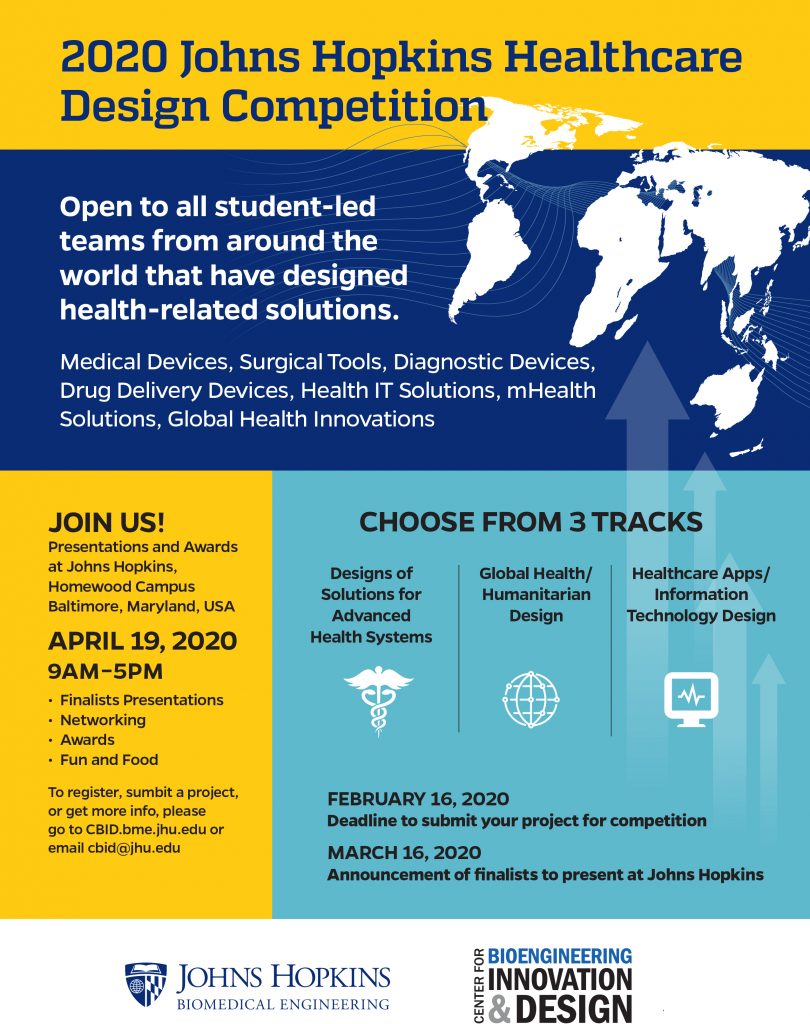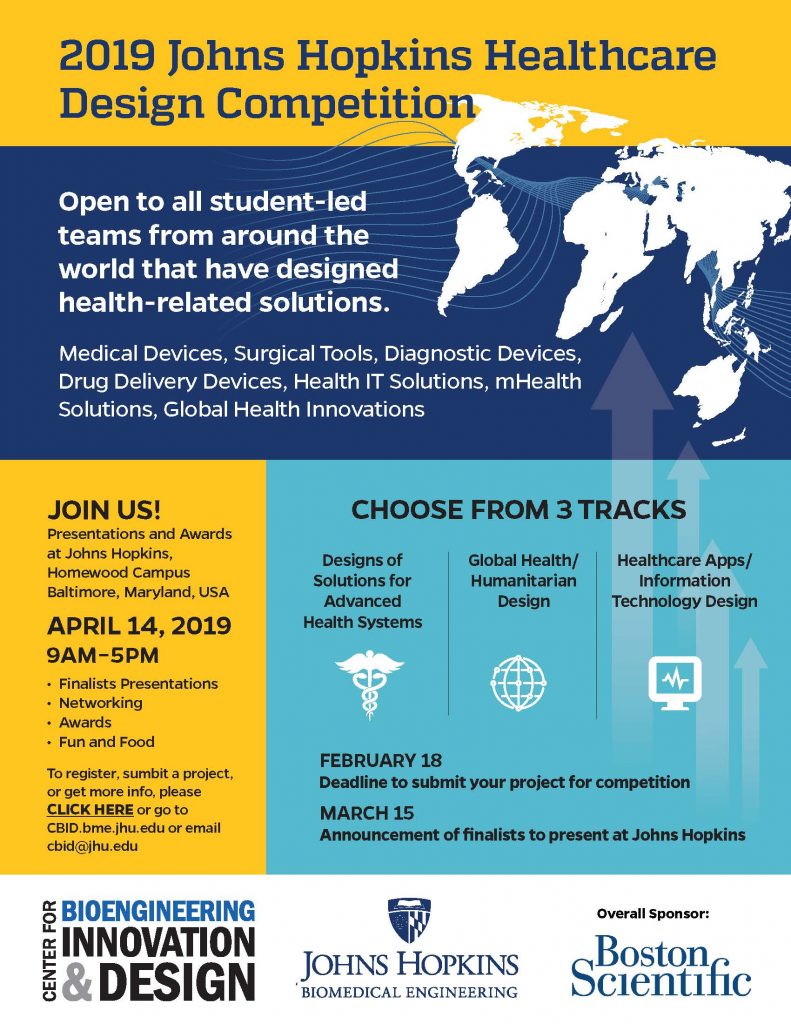
2020 Johns Hopkins Healthcare Design Competition for Students Worldwide
Deadline: February 18, 2020.
The Johns Hopkins Center for Bioengineering Innovation and Design (CBID), within the Johns Hopkins Department of Biomedical Engineering, offers a one-year MSE degree program called the David E. Swirnow Master’s Program in Bioengineering Innovation and Design. Our program is about educating the next generation of global leaders. We bridge the gap between human knowledge and human need. Students choose CBID for the opportunity to work with the world’s best clinicians one-on-one and engage in disruptive innovation to improve patient care around the globe.
COMPETITION TRACKS
- Designs of Solutions for Advanced Health Systems
- Global Health/ Humanitarian Design
- Healthcare Apps/Information Technology Design
\
ELIGIBILITY
- Project must be focused on a healthcare application
- Innovations for both high-resource settings and global health applications are eligible
- Device, hardware, and digital solutions are eligible
- Project must have been started after January 1st, 2015
- Project must be driven by full-time students
- Ph.D./Postdoc research projects and projects that have utilized significant research funding (>$100k) are ineligible
- Projects that are not run by full-time students are ineligible. For example, projects run by startup companies or faculty are ineligible.
- Eligible full-time students include those working towards undergraduate, masters, doctoral, and professional degrees (MBA, MD, etc.).
Simplified Rubric for Design Brief:
The Design Brief is a two-page executive summary of your design project. The brief should be written for an audience of medtech engineers and designers that are likely not intimately familiar with your clinical and solution space.
Content
Design Briefs will be evaluated by following four criteria. We recommend the design brief is laid out in sections devoted to each criteria.
- Problem description (25%)
- Define the problem you are addressing, the clinical/healthcare background, and why there is a need for a better solution.
- Solution concept(s) (25%)
- Present your proposed solution with your design rationale and explain how it meets the needs of the stakeholders involved in your clinical/healthcare problem.
- Reduction to practice (25%)
- Describe the proof-of-concept experimental results you have completed and/or renderings and photos of your prototype(s).
- Pathway to implementation (25%)
- Describe the pathway that lies ahead for your project towards creating an impactful solution.
Format
The Design Brief must be <=2 pages in length including figures and must follow NIH formatting guidelines:
- Use an Arial, Helvetica, Palatino Linotype, or Georgia typeface, a black font color, and a font size of 11 points or larger. (A Symbol font may be used to insert Greek letters or special characters; the font size requirement still applies.)
- Type density, including characters and spaces, must be no more than 15 characters per inch. Type may be no more than six lines per inch. Use standard paper size (8 ½” x 11) . Use at least one-half inch margins (top, bottom, left, and right) for all pages. No information should appear in the margins.
- Figures, plots, reference, and/or photos are highly recommended but are counted towards the page limit.
Any design briefs longer than 2 pages will be disqualified from the competition.
OFFICIAL LINK

